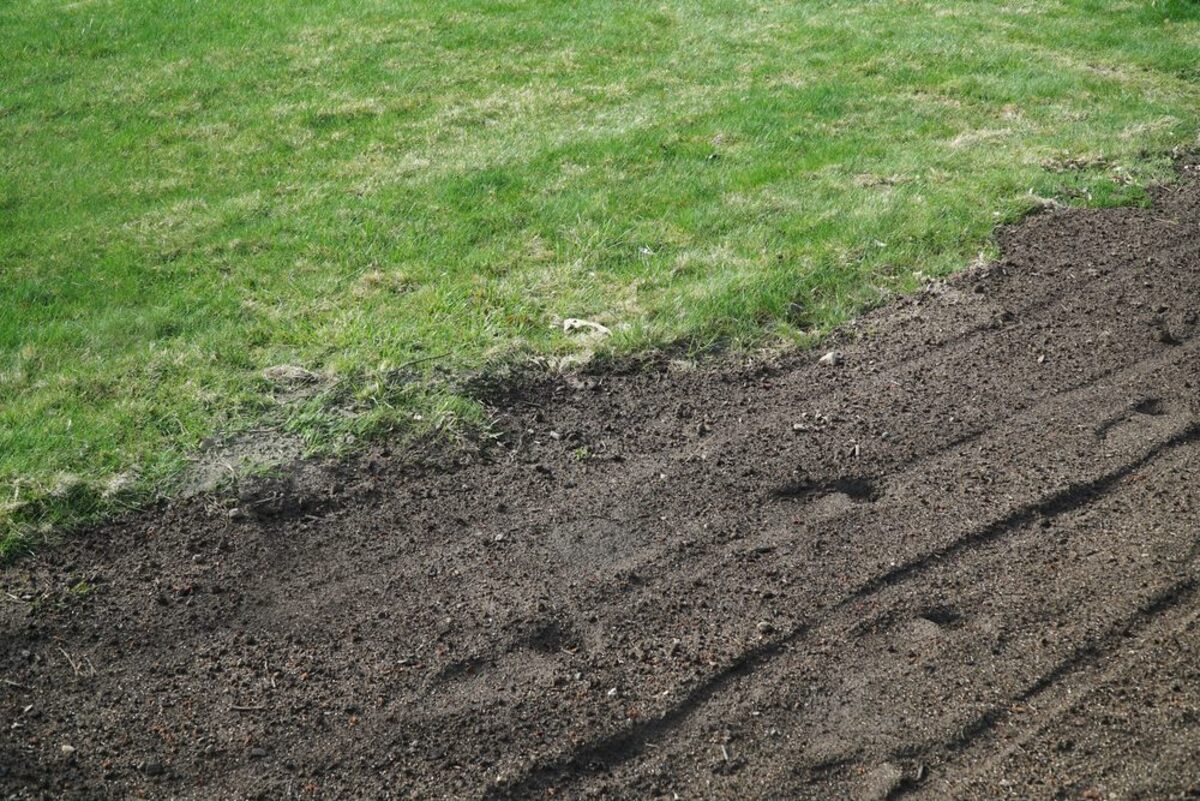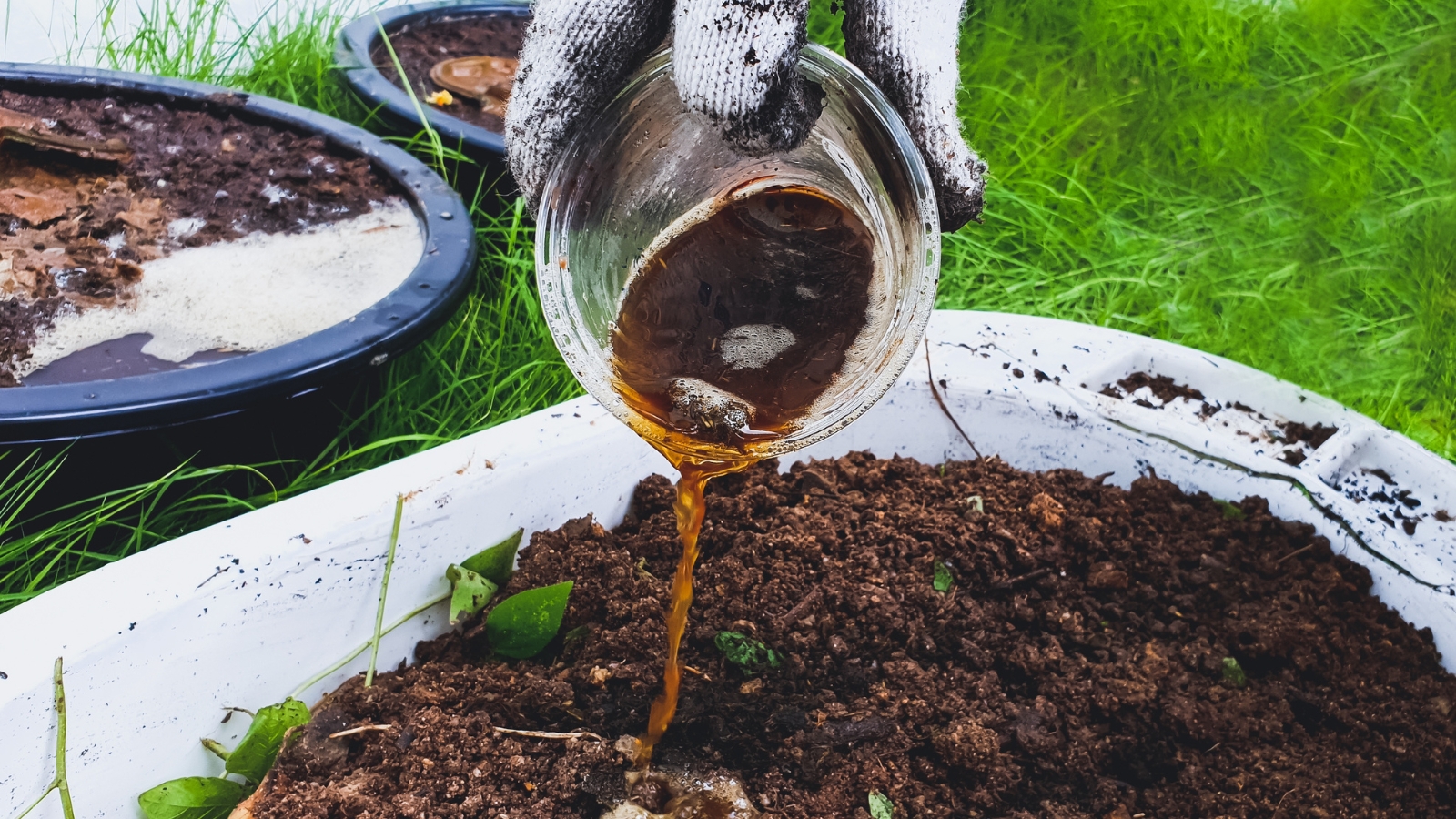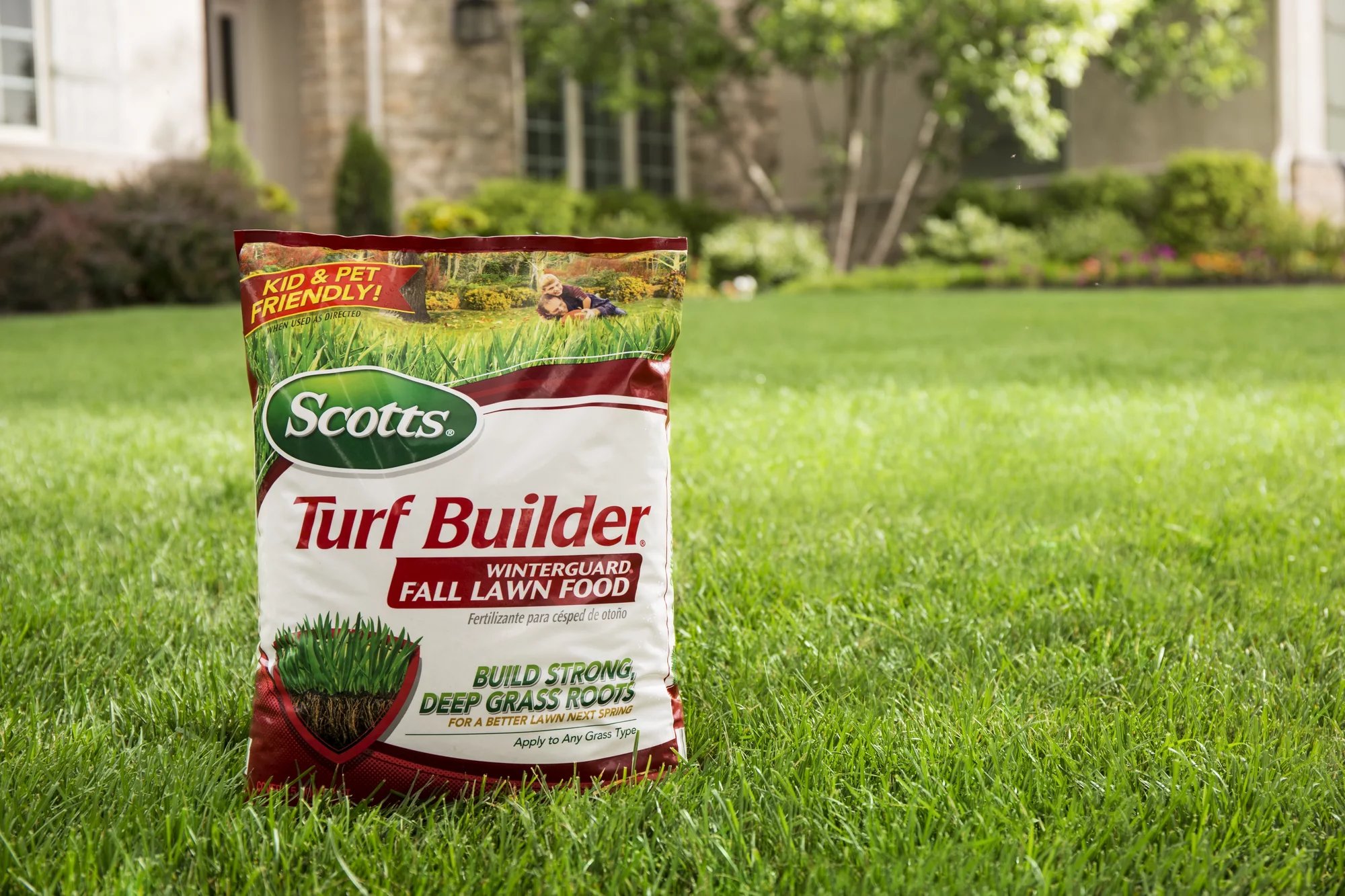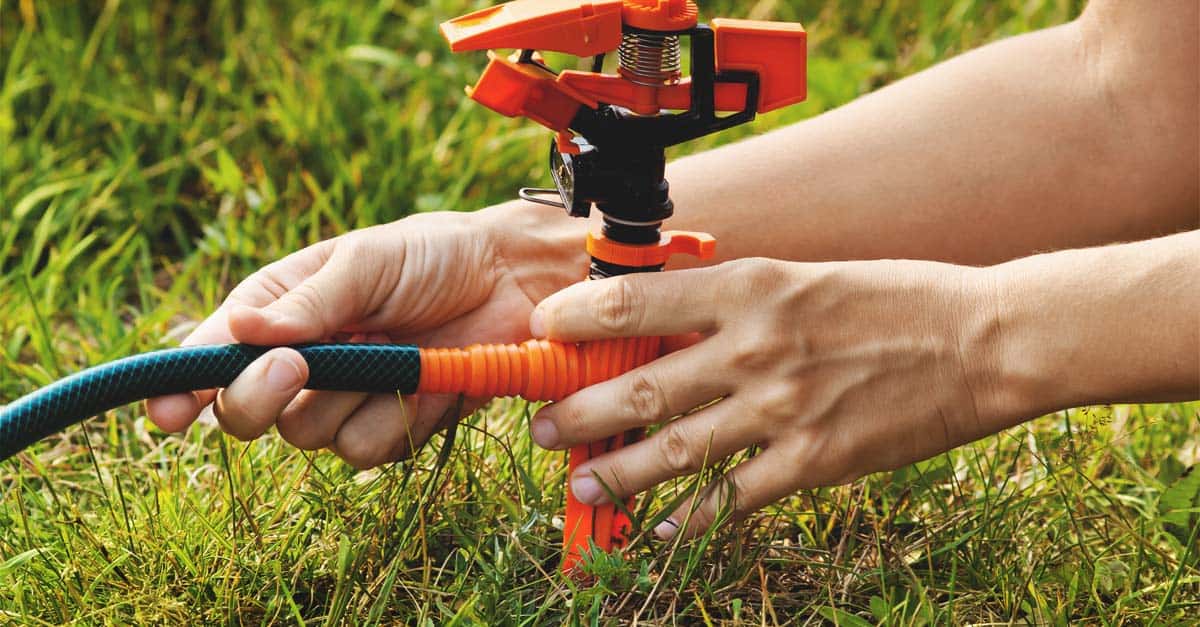Home>Gardening Basics>Understanding Soil>When To Apply Topsoil To Your Lawn
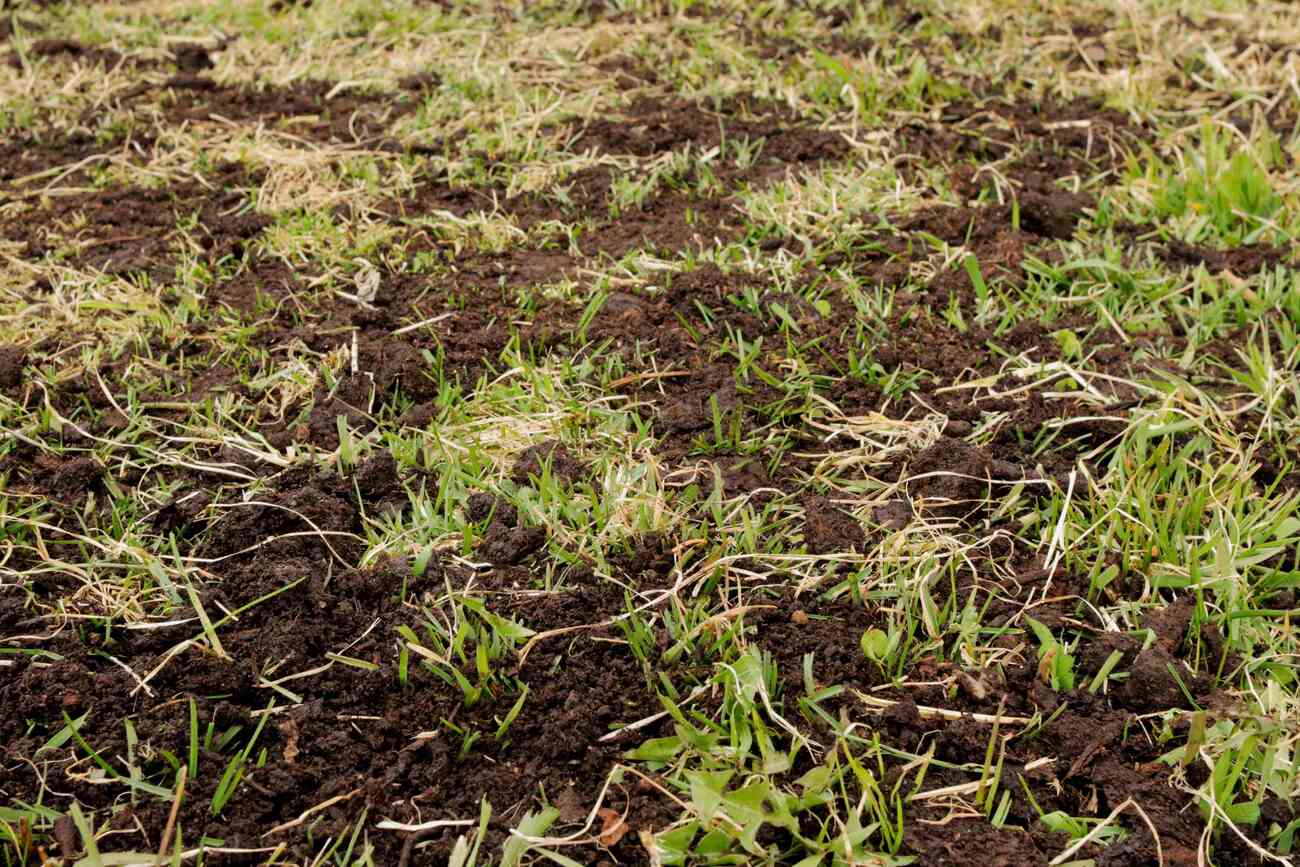

Understanding Soil
When To Apply Topsoil To Your Lawn
Modified: January 22, 2024
Discover the best time to apply topsoil to your lawn and gain a deeper understanding of soil composition and its importance for healthy, vibrant lawns.
(Many of the links in this article redirect to a specific reviewed product. Your purchase of these products through affiliate links helps to generate commission for Chicagolandgardening.com, at no extra cost. Learn more)
Table of Contents
Introduction
Welcome to the world of soil, where the foundation of life begins! Soil is an incredibly important aspect of our ecosystem, serving as the medium in which plants grow and thrive. Understanding soil and its characteristics can greatly impact the success of your gardening and landscaping endeavors. One essential component of maintaining a healthy and vibrant lawn is ensuring the right balance of topsoil.
Topsoil, as the name suggests, is the top layer of soil found on the surface. It is rich in organic matter, nutrients, and microorganisms, making it the most fertile layer for plants to grow. Applying topsoil to your lawn can provide numerous benefits, from improving soil structure to supporting root development.
In this article, we will explore the advantages of applying topsoil to your lawn, the factors to consider before doing so, the best time to apply topsoil, and step-by-step instructions on how to apply it. We will also provide you with maintenance tips to ensure the longevity and health of your newly topsoiled lawn.
Whether you are a novice gardener or have years of experience, this comprehensive guide will equip you with the knowledge you need to make informed decisions about enhancing your lawn. So, let’s dive deep into the world of soil and discover how topsoil can transform your lawn into a lush and vibrant oasis!
Benefits of Applying Topsoil to Lawn
Applying topsoil to your lawn can have a multitude of benefits that will contribute to the overall health and beauty of your outdoor space. Let’s explore some of the key advantages:
- Improved Soil Structure: Topsoil is rich in organic matter, which helps improve the structure of the soil. It adds density and prevents compaction, allowing the roots of your lawn to penetrate deeper into the ground, absorb nutrients, and establish a stronger foundation.
- Enhanced Nutrient Availability: The organic matter in topsoil acts as a reservoir for essential nutrients, such as nitrogen, potassium, and phosphorus. By applying topsoil, you are replenishing these nutrients in the soil, promoting healthier plant growth and more vibrant greenery.
- Improved Water Retention: Topsoil has excellent water-holding capacity, preventing excessive runoff and allowing for better water absorption. This helps to mitigate the risk of soil erosion and drought stress, ensuring your lawn remains adequately hydrated even during dry spells.
- Promotion of Microbial Activity: Topsoil contains a diverse population of beneficial microorganisms that contribute to the breakdown of organic matter and the cycling of nutrients. These microbes help create a balanced and thriving ecosystem in the soil, supporting the health of your lawn.
- Suppression of Weeds: Applying topsoil can help suppress weed growth by providing a thicker barrier for weed seeds to penetrate. It creates a more inhospitable environment for weeds, reducing the need for herbicides and manual weed removal.
- Enhanced Aesthetic Appeal: Topsoil can help level uneven areas of your lawn, giving it a smoother and more uniform appearance. It fills in divots, depressions, and bare spots, resulting in a visually appealing and attractive landscape.
By applying topsoil to your lawn, you are creating a nurturing environment for your plants to flourish. The benefits extend beyond mere aesthetics, contributing to the overall health and resilience of your lawn. So, let’s now explore the factors you should consider before applying topsoil.
Factors to Consider Before Applying Topsoil
Before you dive into applying topsoil to your lawn, there are a few key factors to consider to ensure success. Let’s explore these factors:
- Soil Testing: Conduct a soil test to determine the pH level and nutrient content of your current soil. This will help you understand if any amendments or adjustments are needed before adding topsoil. It’s also important to assess the soil drainage properties to prevent waterlogging issues.
- Quantity and Quality: Determine the amount of topsoil you will need based on the size of your lawn and the desired thickness of the topsoil layer. Consider sourcing topsoil from reputable suppliers to ensure its quality and to avoid potential issues with contaminants or weed seeds.
- Grass Type: Consider the type of grass you have in your lawn. Different grass species have different soil preferences, so it’s important to understand the requirements of your specific grass type to ensure compatibility with the topsoil you choose.
- Existing Lawn Condition: Evaluate the current condition of your lawn. If there are any major issues like excessive thatch, compacted soil, or weed infestation, it’s important to address these problems before applying topsoil. Consider aerating, dethatching, or using appropriate herbicides as necessary.
- Timing: Choose the right time of year to apply topsoil. Opt for cooler weather in the spring or fall when the grass is actively growing but experiencing less stress. Avoid applying topsoil during extreme heat, as it can cause stress to the grass and hinder root development.
By considering these factors, you will be able to make informed decisions and ensure that your lawn is in the best possible condition to receive the benefits of topsoil. Now, let’s move on to the next section to discover the ideal time to apply topsoil to your lawn.
Best Time to Apply Topsoil to Lawn
Timing is crucial when it comes to applying topsoil to your lawn. You want to ensure that you choose the right season to maximize the benefits and give your lawn the best chance to thrive. Here are some considerations for the best time to apply topsoil:
- Spring or Fall: The ideal time to apply topsoil is in the spring or fall. These seasons provide cooler temperatures and more consistent rainfall, creating optimal conditions for grass growth and establishment.
- Avoid Extreme Heat or Cold: It’s important to avoid applying topsoil during periods of extreme heat or cold. Hot summer temperatures can stress the grass and make it more difficult for the topsoil to retain moisture. Likewise, frost or freezing temperatures in winter can hinder root development.
- Avoid Rainy Periods: While you want to ensure adequate moisture for the topsoil to settle, it’s important to avoid applying topsoil during excessively rainy periods. Excessive rainfall can cause the topsoil to wash away or become compacted, compromising its effectiveness.
- Consider Grass Growth Stage: When applying topsoil, take into account the growth stage of your grass. It’s best to apply topsoil when the grass is actively growing but not actively greening up or going dormant. This allows the roots to take advantage of the nutrients and organic matter in the topsoil.
By choosing the right time to apply topsoil, you set your lawn up for success. It gives the grass ample time to establish a strong root system, take in essential nutrients, and grow vigorously. The next section will provide you with a step-by-step guide on how to properly apply topsoil to your lawn.
Step-by-Step Guide on How to Apply Topsoil
Applying topsoil to your lawn may seem like a daunting task, but with the right steps, it can be a straightforward process. Here is a step-by-step guide to help you properly apply topsoil:
- Prepare the Lawn: Start by mowing the grass to a shorter height. This will make it easier to spread the topsoil evenly. Remove any debris or weeds from the lawn to create a clean surface.
- Spread the Topsoil: Use a rake or a shovel to spread the topsoil over the lawn. Aim for an even distribution, covering any bare spots or low areas. Keep in mind the desired thickness of the topsoil layer based on your lawn’s needs.
- Level the Surface: After spreading the topsoil, use a rake or a lawn roller to level the surface. This will ensure a smooth and uniform appearance. Pay attention to any high or low spots and adjust accordingly.
- Water the Topsoil: Once the topsoil is applied and leveled, water the lawn thoroughly. This will help the topsoil settle into the existing soil and promote good root-to-soil contact. It will also prevent the topsoil from drying out too quickly.
- Consider Overseeding: If your lawn has thin or bare areas, consider overseeding after applying the topsoil. This will help promote thicker and healthier grass growth, filling in any gaps and improving the overall density of your lawn.
- Mulch or Fertilize: To further enhance the benefits of the topsoil, consider applying a layer of organic mulch or a slow-release fertilizer. This will add additional nutrients and organic matter to the soil, promoting even greater plant growth and vitality.
Following these steps will ensure that you apply topsoil correctly and give your lawn the best chance to thrive. Now, let’s move on to the final section to learn some maintenance tips after applying topsoil.
Maintenance Tips After Applying Topsoil
After applying topsoil to your lawn, it’s important to take proper care to ensure the success and long-term health of your newly topsoiled area. Here are some maintenance tips to follow:
- Watering: Adequate watering is crucial after applying topsoil. Keep the area consistently moist for the first few weeks to promote proper settling and root development. Water deeply, but do not overwater, as this can lead to waterlogged soil and root rot.
- Mowing: Allow the grass in the topsoiled area to grow to a height of at least 3 inches before mowing for the first time. Gradually reduce the height over subsequent mowing sessions to the desired height for your grass type. Avoid mowing too short, as this can stress the grass and inhibit root growth.
- Fertilizing: Depending on the nutrient content of the topsoil, you may need to fertilize your lawn after applying topsoil. Follow a proper fertilization schedule based on your grass type and specific soil needs to ensure proper nutrition for your lawn.
- Weeding: Monitor the topsoiled area for weed growth and promptly remove any weeds that sprout. Regular weeding will help prevent weed competition and maintain the integrity of your newly topsoiled lawn.
- Avoid Heavy Traffic: Restrict heavy foot traffic on the topsoiled area for the first few weeks to allow the grass roots to establish and penetrate the topsoil. This will prevent soil compaction and damage to the newly grown grass.
- Maintain Proper Soil Moisture: Ongoing maintenance of soil moisture is crucial. Avoid letting the soil become completely dry or waterlogged. Use a soil moisture meter or visually inspect the soil to determine when watering is necessary.
- Regular Maintenance: Continue to follow your regular lawn maintenance practices, including regular mowing, aeration, and dethatching as needed. These practices will promote a healthy and well-maintained lawn, supported by the benefits of the topsoil.
By following these maintenance tips, you will ensure the continued health and vitality of your lawn after applying topsoil. Remember to regularly assess the condition of your lawn and make any necessary adjustments to your maintenance routine. Now, your lawn is ready to flourish and showcase its lush and vibrant transformation!
Conclusion
Understanding the importance of soil and incorporating topsoil into your lawn care routine can make a significant difference in the health and appearance of your outdoor space. By applying topsoil, you can improve soil structure, enhance nutrient availability, promote microbial activity, suppress weeds, and enhance the aesthetic appeal of your lawn.
Before applying topsoil, consider factors such as soil testing, grass type, existing lawn condition, and timing. These considerations will ensure that you are making informed decisions and setting your lawn up for success.
When it comes to the best time to apply topsoil, choose the spring or fall when temperatures are moderate and rainfall is more consistent. Avoid extreme weather conditions that can stress the grass and hinder root development.
Follow a step-by-step guide to properly apply topsoil to your lawn, which includes preparing the lawn, spreading the topsoil evenly, leveling the surface, watering, and considering overseeding or fertilization for further improvement.
After applying topsoil, proper maintenance is essential. This includes adequate watering, mowing at the appropriate height, fertilizing as needed, regular weeding, minimizing heavy foot traffic, and maintaining proper soil moisture.
By following these guidelines and incorporating topsoil into your lawn care routine, you can create a lush, healthy, and vibrant lawn. So, roll up your sleeves, grab that rake, and experience the transformation that topsoil can bring to your outdoor oasis!
